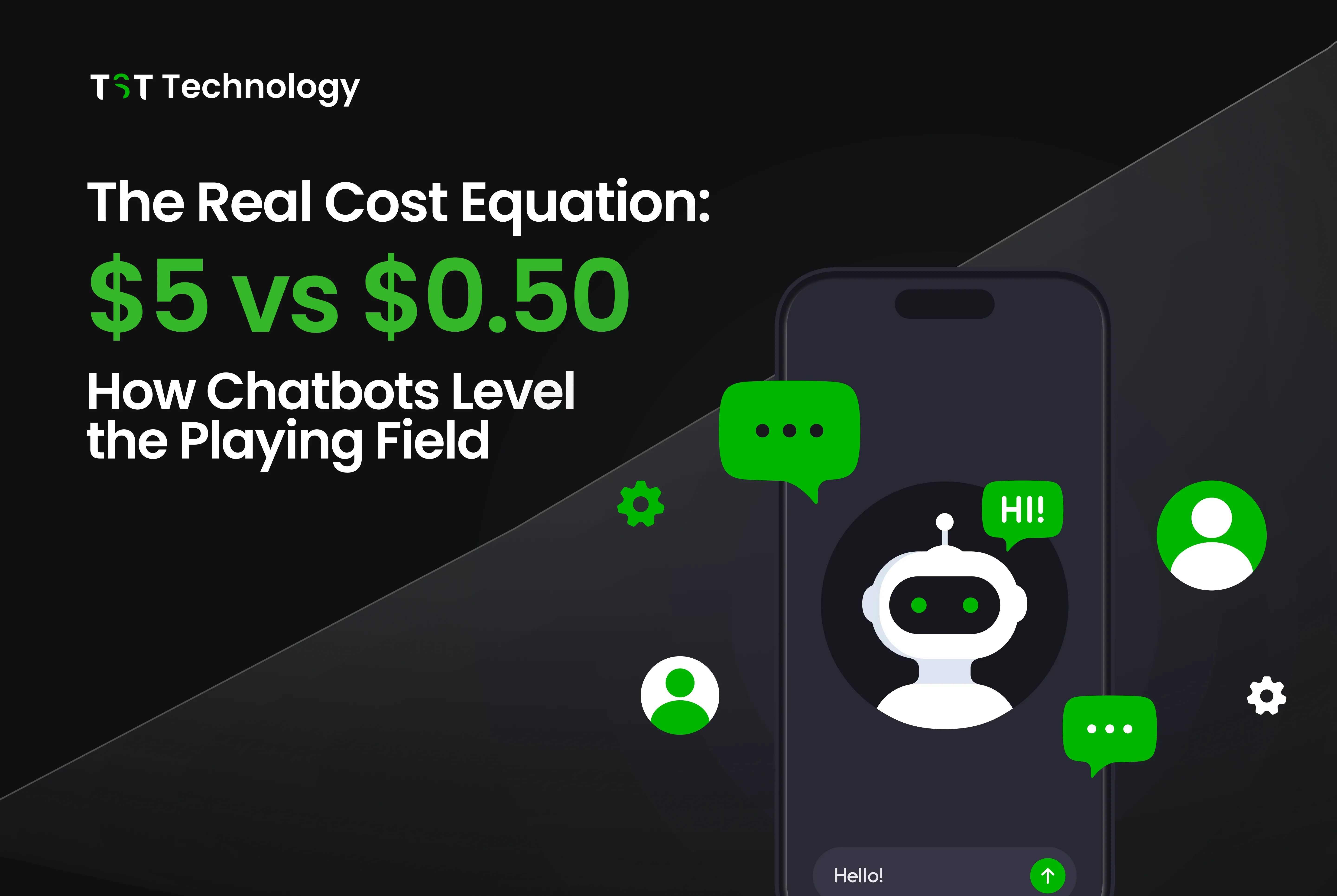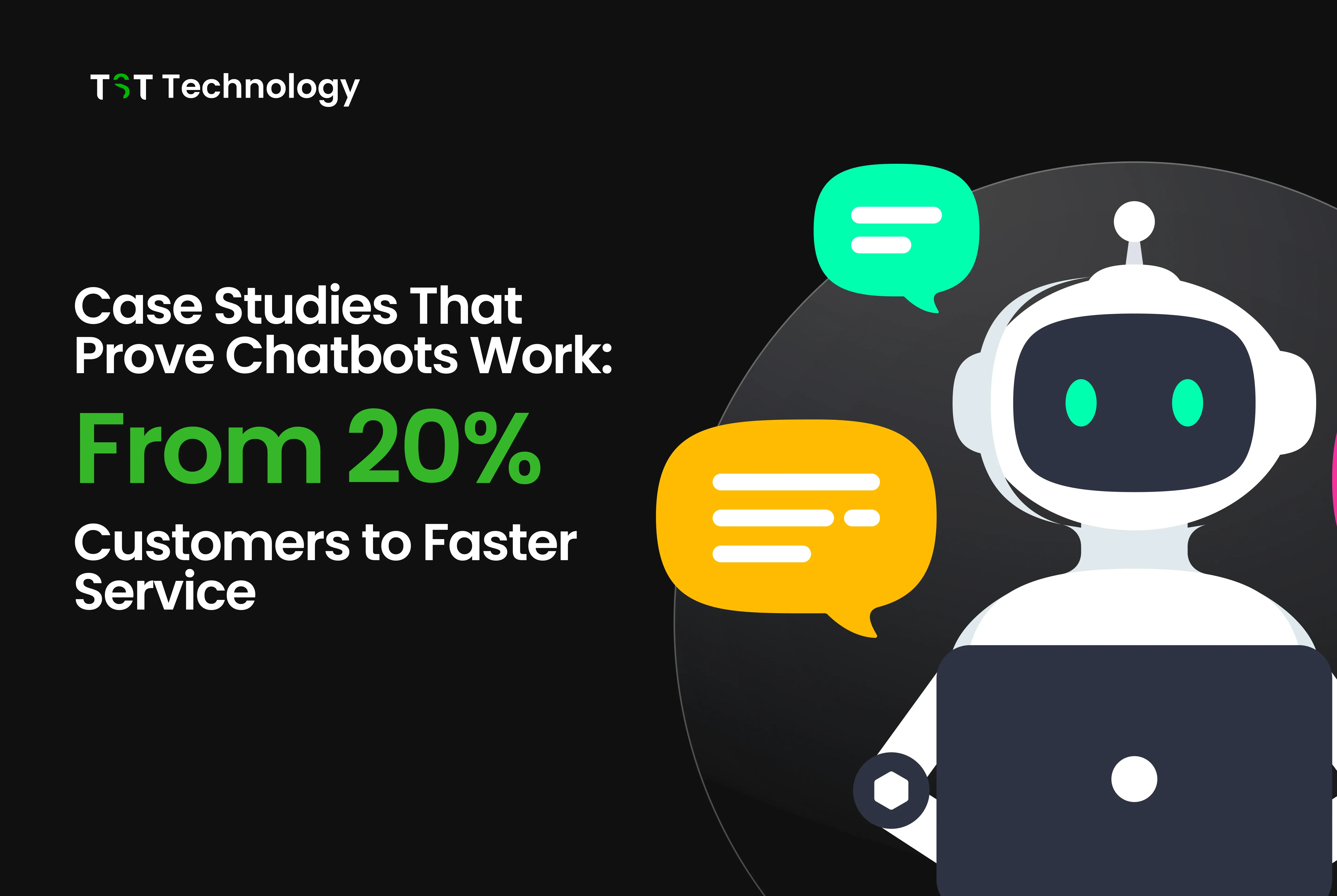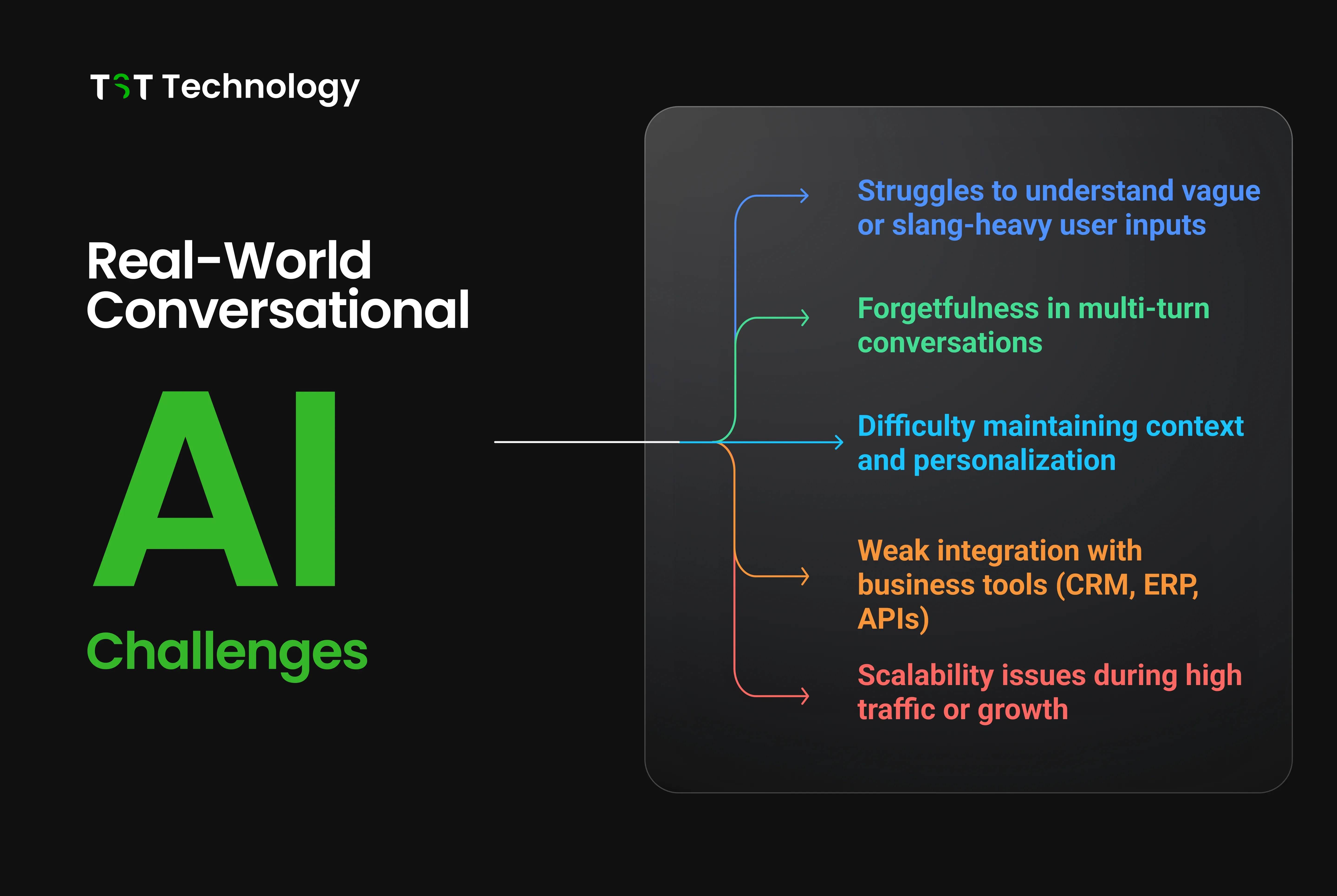In a world where instant answers have become the norm, AI chatbots are revolutionizing how businesses connect with customers, but at what cost to the workforce?
While businesses report remarkable customer satisfaction gains, with 67% of consumers expressing satisfaction with their chatbot interactions, an equally significant 36% of workers fear AI will eliminate job opportunities.
This article explores the delicate balance between leveraging AI chatbot efficiency and addressing legitimate workforce concerns, providing actionable insights for business leaders navigating this transformative moment.
What Are the Pros and Cons of AI Chatbots for Small Businesses?
Cost Benefits That Level the Playing Field

For small businesses operating on tight margins, AI chatbots offer a lifeline to compete with larger corporations.
The cost differential is striking: chatbot interactions cost approximately $0.50 or less, compared to $5 per human agent interaction. This 90% cost reduction opens customer service capabilities previously accessible only to enterprises with massive call centers.
A typical small business can reduce the need for customer service representatives by up to 70%.
Consider a practical example: a business receiving 10,000 monthly inquiries, with 8,000 being simple queries, spends roughly 667 hours monthly on these questions. At an average wage of $21 per hour, that's $168,084 annually. Implementing a chatbot costing $50,000 annually generates savings of $118,084.
Real-world success stories validate these projections. Amtrak achieved an 800% return on investment, increased bookings by 25%, and saved $1 million in customer service expenses annually. Charter Communications reduced live chat volume by 83% and achieved 500% ROI within six months. These aren't tech giants; they're organizations that identified high-volume, low-complexity tasks perfect for automation.
The Hidden Costs Small Businesses Must Consider
The initial investment represents just one piece of the financial puzzle. Small businesses face ongoing costs, including maintenance, training, data curation, and continuous optimization. Many teams underestimate the resources required for domain-specific knowledge acquisition and the curation of high-quality training datasets process that proves both time-consuming and resource-intensive.
The impersonal factor poses particular risks for small businesses where a personal touch differentiates them from competitors. While AI-powered chatbots might be more efficient than humans, customers can feel like they're interacting with a robot rather than a trusted advisor.
Limited AI knowledge among small business owners creates implementation barriers. Starting with user-friendly, no-code platforms helps, but effectively deploying chatbots still requires understanding customer journey mapping, intent recognition, and conversation flow design. Without this expertise, businesses risk deploying chatbots that frustrate rather than delight customers.
How Do AI Chatbots Impact Customer Satisfaction vs Employee Jobs?
The Customer Satisfaction Success Story
The data on customer satisfaction reveals a remarkably positive trend. Research shows that 87.2% of consumers rate their interactions with bots as either neutral or positive, while 62% of respondents prefer engaging with customer service digital assistants rather than waiting for human agents. These statistics demolish the myth that customers universally reject automated assistance.
A remarkable 68% of users appreciate the quickness of chatbot responses, with 61% of consumers preferring faster replies from AI over waiting to talk to a human customer service representative. When 90% of customers expect instant responses to service queries, chatbots deliver on this expectation in ways human-only teams cannot match.
The Employee Displacement Reality That Leaders Can't Ignore
While customers benefit, employees face legitimate concerns. The stark reality is that 30% of US companies have already replaced workers with AI tools like ChatGPT, with this number projected to rise to 38% in the near future. From January to early June 2025, 77,999 tech job losses were directly linked to AI, amounting to 491 people losing their jobs to AI every day.
About 52% of workers say they're worried about the future impact of AI use in the workplace, with 32% thinking it will lead to fewer job opportunities for them in the long run.
Lower-wage workers express more worry compared to higher earners, despite research showing higher-paid positions face greater automation risk. Young workers aged 18-24 are 129% more likely than those over 65 to worry that AI will make their jobs obsolete, reflecting concerns about competing against increasingly sophisticated AI throughout their careers.
AI Chatbot Case Studies: Customer Satisfaction Gains

Telenor's chatbot implementation delivered a 20% increase in customer satisfaction alongside a 15% revenue increase. This dual benefit, which is improving both experience and financial performance that represents the ideal outcome that business leaders seek. The telecommunications industry, with its high volume of repetitive inquiries about billing, service plans, and troubleshooting, proves particularly well-suited for chatbot automation.
In healthcare, Civica's chatbot implementation improved care quality while reducing workload on healthcare professionals. This application extends beyond customer service into operational efficiency, allowing medical staff to focus on patient care rather than administrative tasks. The energy sector reports similar success, with Stadtwerke Düren's chatbot handling 55% of inquiries, cutting costs while boosting customer satisfaction.
The banking sector demonstrates perhaps the most dramatic transformation. Bradesco reduced customer waiting times from 10 minutes to mere seconds, fundamentally changing the customer experience. In an industry where time is money and customer patience is limited, this improvement translates directly into competitive advantage and customer retention.
Managing Employee Fears During AI Chatbot Rollout
Change Management Strategies That Build Trust
Rolling out AI chatbots is not just a technical task; it’s also about managing people’s emotions and expectations. To make the process smooth, companies need a clear change management plan that focuses on both technology and people.
Organizations that build a culture of change are more likely to complete projects on time and within budget.
1. Communicate with honesty and clarity
Start by being open about why AI is being introduced and how it will help the company and employees. When leaders clearly explain how AI supports business goals and employees’ work, people feel more secure and informed.
In fact, employees who get regular updates from management are 3 times more likely to stay engaged in their work.
2. Involve employees early
Don’t make AI adoption a top-down order. Instead, invite employees to share feedback from day one. When employees feel heard, they are more likely to support the change.
Successful companies often form cross-department AI teams, a “volunteer army” of motivated leaders who help others understand and trust the new system.
This approach spreads positive stories about AI across all levels of the organization.
Training and Support Systems That Ensure Success
1. Focus on continuous learning
Training employees is key to success. But AI learning is different; new skills become outdated fast. The half-life of AI skills is only 3 to 4 months, so ongoing learning is essential.
2. Build AI literacy, not just technical skills
Employees don’t need to become coders. They need to understand how AI works in context, recognize patterns, and know when and how to use it effectively. Hands-on practice helps them apply AI confidently in real situations.
Research from Prosci shows that user confidence is one of the biggest barriers to AI adoption. That’s why regular training and continuous support are critical.
3. Keep humans in the loop
AI automation should work with humans, not replace them. Use a hybrid approach, let AI handle simple tasks, and humans take over complex or emotional ones.
Smart routing systems can smoothly transfer conversations to human agents when needed, maintaining efficiency and empathy.
Addressing the ROI and HR Implications Together
Many employees worry that AI will replace their jobs. Leaders must reframe the message: AI is a tool for enhancement, not elimination.
1. Focus on productivity, not job loss
Small business owners report saving around 13 hours per week thanks to AI.
Those hours are then spent on more valuable tasks, developing new ideas, improving service, or building better tools.
2. Use AI to improve quality and growth
Companies using Conversation Intelligence tools save up to 60% of the time they used to spend analyzing calls. Now, that time goes into training staff and improving customer experience, showing that AI makes humans more effective, not less relevant.
3. Set clear governance and ethical rules
Give employees space to explore AI tools at their own pace, but set clear policies and guidelines. This balance ensures freedom with structure, avoiding both over-control and chaos. Many employees worry that AI will replace their jobs.
Navigating Conversational AI Challenges in Real-World Use

Technical Challenges and Practical Solutions
Understanding customer intent remains one of the most persistent conversational AI challenges. When users ask vague questions like "fix my stuff," the AI enters a frustrating guessing game that deteriorates the user experience. The solution involves comprehensive training with diverse language patterns, slang, and dialects to improve natural language understanding.
One of the biggest challenges in conversational AI is understanding what users really mean. People often say things like “fix my stuff” without giving details. This confuses the AI and leads to poor answers.
Solution: Train the AI with different ways people speak, including slang, short phrases, and local language styles. This helps it understand intent better.
Another major issue is context memory.
Most chatbots forget what was discussed earlier in the conversation. But users expect them to remember. To fix this, developers use session management and conversation history tracking. Advanced systems even analyze customer data to personalize responses, making interactions feel more human and friendly.
Managing long conversations is another tough job. In multi-turn dialogues, the chatbot must stay on topic, understand follow-up questions, and respond naturally. This separates basic bots from truly smart conversational agents.
Integration and Scalability Considerations
Before launching, businesses should decide how they’ll measure chatbot success. Start by identifying the most common customer queries, then train the chatbot to handle those first.
This allows companies to automate simple tasks step by step, showing clear results and savings over time.
Key factors for success include:
- A clear goal or use case.
- Quality training data.
- Strong integration with tools like CRM and ERP systems.
APIs should connect the chatbot to the company databases smoothly. Proper data mapping and testing prevent errors and delays that often happen in rushed implementations.
Next comes scalability, making sure the system can grow as usage increases.
Check if the platform:
- Can handle more conversations.
- Supports multiple languages.
- Works across channels like web, WhatsApp, and mobile apps.
Also, plan pricing carefully so costs don’t skyrocket as more users join.
Lastly, system performance matters.
When too many users talk to the chatbot at once, it can slow down or crash.
To avoid this, teams should run load tests, use auto-scaling, and monitor performance in real time. These steps keep the chatbot fast, reliable, and user-friendly even during peak hours.
Next Steps for Business Leaders
Making the Decision: When Chatbots Make Sense
AI chatbots deliver maximum value in specific scenarios. High-volume, low-complexity inquiries like password resets, order tracking, and basic product information represent ideal use cases. When 80% of customer queries follow predictable patterns, automation generates substantial ROI without sacrificing quality.
Businesses experiencing rapid growth or seasonal spikes benefit particularly from chatbot scalability. Rather than hiring and training temporary staff for peak periods, chatbots handle volume fluctuations seamlessly. This flexibility proves especially valuable for small businesses lacking resources for large customer service teams.
However, chatbots aren't appropriate for every situation. Complex issues requiring nuanced judgment, emotional intelligence, or creative problem-solving still demand human intervention. Sensitive topics like healthcare diagnoses, financial advice, or complaint resolution benefit from human empathy and contextual understanding that current AI cannot replicate.
Implementation Roadmap for Success
Begin with a pilot focused on specific, measurable objectives. Identify 2-3 use cases where chatbots can deliver quick wins, reducing response times for common questions, qualifying leads before sales contact, or providing 24/7 basic support. These early successes build organizational confidence and provide data for broader rollout. If you'd like to discuss how to start your AI chatbot journey, feel free to book a meeting with our expert for personalized guidance.
Invest in comprehensive training data from the start. Diverse conversation samples representing various user intents, regional language variations, and industry-specific terminology create the foundation for effective AI. Include edge cases and unusual queries to prepare the chatbot for real-world unpredictability. To better understand how AI-driven automation fits into your overall business processes, explore our detailed AI workflow automation guide.
Establish clear escalation pathways before launch. Define when chatbots should transfer to human agents based on query complexity, customer sentiment, or conversation length. Smooth handoffs that maintain context prevent the frustrating "start over" experiences that alienate customers.
Monitor, measure, and iterate continuously. Track problem resolution rates, customer satisfaction scores, escalation rates, and cost per interaction. Analyze failed interactions for training opportunities and update the chatbot based on new patterns in user behavior. This continuous improvement cycle separates chatbots that deliver lasting value from those that become neglected frustrations.
Conclusion
AI chatbots have changed how businesses connect with customers. They help companies save money, work faster, and stay available 24/7. With 67% customer satisfaction, it’s clear that people appreciate quick and efficient service.
But the other side of the story matters too. 36% of workers fear losing jobs to automation. That means businesses must balance technology with humanity. The goal isn’t to replace humans but to help them focus on creative, emotional, and high-value tasks that AI can’t do.
For small businesses, the smartest approach is to start small, measure results, and keep improving. Use chatbots for repetitive questions, but keep human agents for complex or emotional issues. Regular employee training and open communication help everyone adapt with confidence.
In the end, successful AI chatbot adoption isn’t about choosing between humans and machines. It’s about creating a partnership where both work together, combining AI efficiency with human empathy to deliver the best customer and employee experience.






